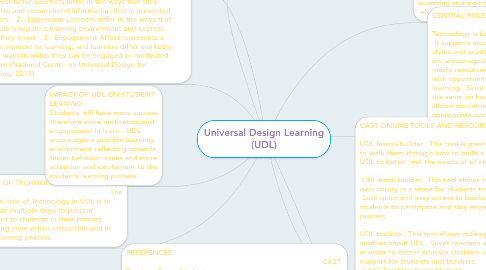Universal Design Learning (UDL)
저자: Anna Welsh

1. UDL INSPIRATIONS. The idea of Universal design theory comes from the building and architectural world. All buildings needed to be accessible to all people. The idea behind Universal Design Learning is the same: design learning activities so they are accessible to everyone (Laureate Education, 2009).
1.1. Physical Environment Examples: Stairs, Elevators, Ramps, Escalator
2. REFERENCES CAST Teaching Every Student: http://www.cited.org/index.aspx?page_id=120 Laureate Education (Producer). (2009m). Reaching and engaging all learners through technology: Universal Design for Learning [Video file]. Baltimore, MD: Author. Laureate Education (Producer). (2009b). Reaching and engaging all learners through technology: Brain research and Universal Design for Learning[Video file]. Baltimore, MD: Author National Center on Universal Design for Learning. (2011, March 15). UDL guidelines–Version 2.0. Retrieved from http://www.udlcenter.org/aboutudl/udlguidelines
3. THREE PRINCIPLES OF UDL. 1. Representation-Learners differ in the ways that they perceive and comprehend information that is presented to them. 2. Expression-Learners differ in the ways that they can navigate a learning environment and express what they know. 3. Engagement-Affect represents a crucial element to learning, and learners differ markedly in the ways in which they can be engaged or motivated to learn (National Center on Universal Design for Learning, 2011).
3.1. P1. Examples, sensory disabilities, learning disabilities and language or cultural differences.
3.2. P2. Examples, individuals with significant movement impairments, those struggle with strategic and organizational abilities.
3.3. P3. Examples, individual, group, partner learning to meet the needs of all student learning.
4. ROLE OF TECHNOLOGY IN UDL. The central role of Technology in UDL is to provide multiple ways to present content to students in their primary learning style within instruction and in the learning process.
4.1. Ways to use Technology within the three principles : Podcasts, PowerPoint, Blogs, Wikis, online collaboration, webquests
5. IMPACT OF UDL ON STUDENT LEANING : Students will have more success therefore more motivation and engagement in learn. UDL encourages a positive learning environment reflecting towards fewer behavior issues and more attention and excitement to the students learning process.
6. BRAIN RESEARCH. The brain is one big integrate network (Laureate Education, 2009b). Brain research shows three different learning types: recognizing different patterns, processing actions and plans and processing emotions and evaluate patterns to identity what is important. By accessing a combination of all three learning types through a variety of teaching strategies and methods allows teachers to met all students individual learning needs.
7. HOW UDL SUPPORTS DIVERSITY UDL support cultural, ethnic, linguistic, and academic diversity by providing teachers a set of guidelines to create lessons that foucs on all aspects of diversity of the classroom and the students (Laureate Education, 2009b). As I begin to create my lessons I keep the three learning types in mind. I try to incorporate an activity with each of the learning types. For example, I created a dance lesson that touches each learning type. Recognizing a dance pattern, accessing strategic movement and effective through emotions.
8. CENTRAL ROLE OF TECHNOLOGY IN UDL Technology is key to the UDL approach. It supports students individual learning styles and academic growth. Educators are encouraged to implement multiple media resources which provide students with opportunities to demonstrate their learning. Since no students are exactly the same on how they learn, technology allows educators to modify and provide appropriate accommodations to ensure all student succeed.
9. CAST ONLINE TOOLS AND RESOURCES UDL lesson builder. This tool is great for any teacher to use to walk them through how to build a lesson that reflects UDL to better met the needs of all students. UDL book builder. This tool allows teachers to create their own library in a sense for students to access at any time. Such quick and easy access to books will engcourage students to participate and stay engaged in their learning process. UDL toolkits. This tool allows colleagues to interact with on another about UDL. Gives teachers a way to communication in order to better educate students as well as provides support for students and teachers. CAST Teaching Every Student


